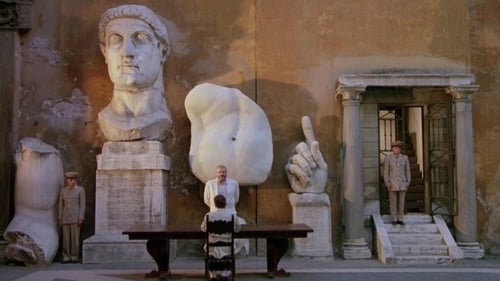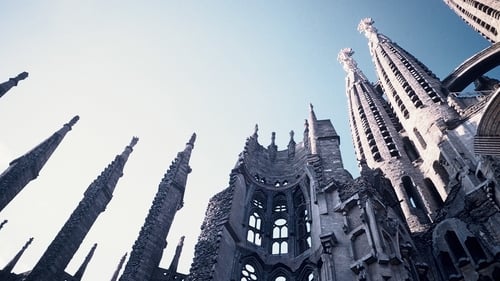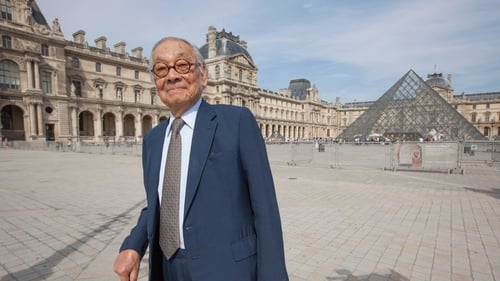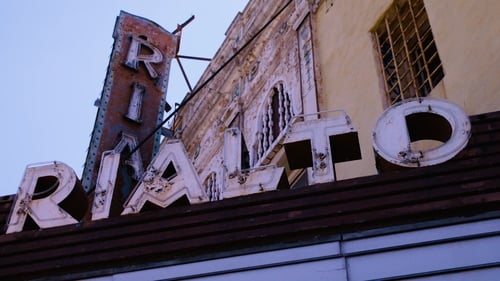The Real Thing (2018)
Real life in fake cities
Género : Documental, Película de TV
Tiempo de ejecución : 55M
Director : Benoît Felici
Sinopsis
A smaller scale Eiffel Tower and the Champs-Elysées can be found just outside Shanghai; a copy of St. Peter’s in Rome can be found in Yamoussoukro, in the Ivory Coast: a journey over three continents to see the architecture of imitation, the uncanny world of the fake.

Acostumbrada a la tranquilidad de Illinois donde tiene su residencia, la Dra. Kate Forester se traslada a un ajetreado hospital de Chicago. Lo que más la duele es desprenderse de su preciosa casa de madera con unas enormes ventanas que dan al lago. Pero se la alquila a un desconocido, al que deja una nota pidiéndole que le reenvíe el correo a la nueva dirección. Alex Wyler, el nuevo inquilino, es un frustrado arquitecto con mucho talento que tiene una conexión especial con la casa.

Cuando, en diciembre de 1941, el ejército japonés ocupa Shanghai, la privilegiada vida de James Graham, un niño inglés de clase alta, toca a su fin. Es separado de sus padres y confinado en un campo de concentración próximo a un aeropuerto militar chino. En un ambiente dominado por la tristeza y la miseria se verá obligado a madurar prematuramente, y eso condicionará su visión del mundo.

Un arquitecto norteamericano llega a Roma, acompañado de su esposa, con motivo de una exposición dedicada al artista francés del sigo XVIII Étienne-Louise Boullée. El arquitecto, a lo largo del tiempo, se obsesiona con unos tremendos dolores de estómago, convencido de que está relacionado con que su mujer está teniendo una aventura con otro colega italiano.

Entre los documentales de Teshigahara destaca uno realizado en 1984 sobre la vida del gran Antonio Gaudí (1852-1926) que, según los especialistas, dio origen a un auge sin precedentes en Japón de admiración e interés por la obra del arquitecto y escultor catalán. Un viaje a la arquitectura de Gaudí, incluyendo su obra maestra inacabada, la catedral de la Sagrada Familia, en Barcelona. (FILMAFFINITY)

The Richardson Olmsted Campus, a former psychiatric center and National Historic Landmark, is seeing new life as it undergoes restoration and adaptation to a modern use.

Architect I.M. Pei speaks about his famous works, such as the addition to the Louvre in Paris, the East Wing of the National Gallery of Art in Washington, D.C., and the Meyerson Symphony Center in Dallas, Texas. Footage of these projects shows both interiors and exteriors. Various other experts comment on the impact and importance of Pei's work.

Cuando la hermosa Leonor llega al estudio de arquitectura Borla y Asociados buscando a Nelson Jara, tanto Mario Borla como su socia Marta Hovart y Pablo Simó, el arquitecto más antiguo de la constructora, aseguran desconocer ese nombre por completo. Pero todos mienten. La verdad comienza a desentramarse a través de los recuerdos de Simó. A él le tocó llevar adelante el desagradable trabajo de lidiar con Nelson Jara, un indignado propietario del edificio colindante a una obra del estudio, damnificado por una grieta en la pared de su apartamento provocada por un error en la construcción. Pero el temor y el nerviosismo que provoca en los tres involucrados la llegada de Leonor y su pregunta “¿qué pasó con Nelson Jara?” evidencian algo mucho más oscuro y sospechoso.

In 1919 an art school opened in Germany that would change the world forever. It was called the Bauhaus. A century later, its radical thinking still shapes our lives today. Bauhaus 100 is the story of Walter Gropius, architect and founder of the Bauhaus, and the teachers and students he gathered to form this influential school. Traumatised by his experiences during the Great War, and determined that technology should never again be used for destruction, Gropius decided to reinvent the way art and design were taught. At the Bauhaus, all the disciplines would come together to create the buildings of the future, and define a new way of living in the modern world.

Celebrating the splendor and grandeur of the great cinemas of the United States, built when movies were the acme of entertainment and the stories were larger than life, as were the venues designed to show them. The film also tracks the eventual decline of the palaces, through to today’s current preservation efforts. A tribute to America’s great art form and the great monuments created for audiences to enjoy them in.

Architect, engineer, geometrician, cartographer, philosopher, futurist, inventor of the famous geodesic dome and one of the most brilliant thinkers of his time. Fuller was renowned for his comprehensive perspective on the world's problems. For more than five decades he developed pioneering solutions reflecting his commitment to the potential of innovative design to create technology that does "more with less" and thereby improve human lives. He spent much of his life traveling the world lecturing and discussing his ideas with thousands of audiences. Now more relevant than ever, this film captures Fuller's ideas and thinking told in his own words.

A portrait of Frank Lloyd Wright (1867-1959), a genius of modern architecture, whose life passed between glory, scandal and tragedy.

This captivating exploration of Alvar Aalto, the defining figure in Scandic design and one of Europe's greatest modern architects, focuses on his remarkable and loving partnership with wife, Aino. Theirs was a profoundly humanist vision that put people at the centre of design, and ranged from work in furniture design through to huge architectural projects. They mixed with, and influenced, major figures of modernist art and design including Le Corbusier, Gropius, Moholy-Nagy, and Frank Lloyd Wright. Come on a cinematic tour of their iconic buildings all over the world, from a library in Russia, a student dormitory at MIT, an art collector's private house near Paris, to a pavilion in Venice. Narrated by experts in the field and featuring never before seen archive footage, Aalto tells the love story of an extraordinary couple with a great passion for human scale architecture.

Tadao Ando (b.1941) is a world-renowned architect, and a recipient of the Pritzker Architecture Prize. His calm, minimalist architecture with elegant concrete designs reflects the Zen principle of simplicity. In the film he reveals the experience a building should evoke, as he discusses a number of iconic designs, such as The Row House and The Church of Light.

A core group of architects embraced the West Coast from Vancouver to LA with its particular geography and values and left behind a legacy of inspired dwellings. Today, architects celebrate the influence established by their predecessors.

Explorations in 21st Century American Architecture Series: Ray Kappe has long been a cult figure in the architectural scene in and around Los Angeles. In 1972, he founded the influential, avant garde Southern California Institute of Architecture (SCI-ARC), where many of the younger-generation architects have studied or taught.

No understanding of the modern movement in architecture is possible without knowledge of its master builder, Mies van der Rohe. Together with documentation of his life, this film shows all his major buildings, as well as rare film footage of Mies explaining his philosophy. Phyllis Lambert relates her choice of Mies as the architect for the Seagram building. Mies's achievements and continuing influence are debated by architects Robert A.M. Stern, Robert Venturi, and Philip Johnson, by former students and by architectural historians. Mies is seen in rare documentary footage.

A historical documentary documenting the rise, function, and abandonment of a 17 story building that once housed The Rochester Psychiatric Center. This film tells the story of the building through historical footage, interviews of former staff and patients who recount their memories of the behemoth facility while also exploring the abandoned building as it is today.

Take a look behind the curtain to see the vast history and recent renovation of one of Rochester, New York's most famous landmarks. Architects, theater personnel, historians, community leaders, and citizens provide in depth insight from start to finish in one of the most extensive renovations the city has ever seen.

Architect Todd Saunders’s buildings on Fogo Island, Newfoundland embrace the excitement of being on the edge of nature and contemporary design while fulfilling the goal of doing ‘new things with old ways’. Saunders and commissioner, Zita Cobb, provide a personal account of the ideas and traditions that inspire this bold and socially ambitious architectural venture. Gorgeously photographed over the Island’s seven seasons, the film is a flowing, visual narrative that unfolds over time as the principal stage of the project, the Fogo Island Inn, approaches completion.
















